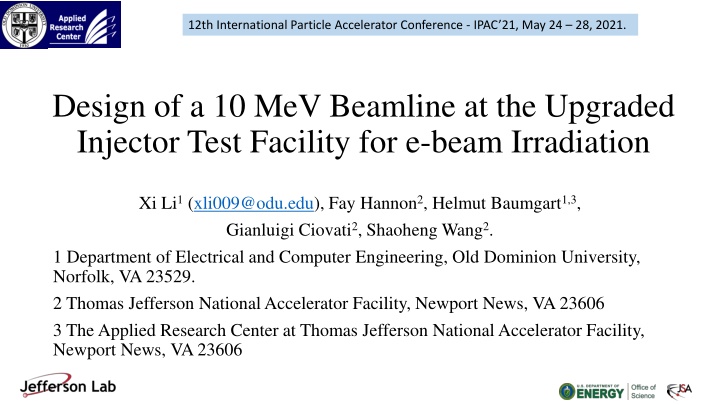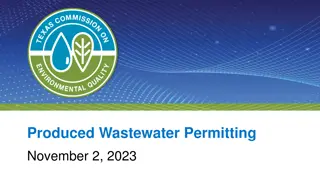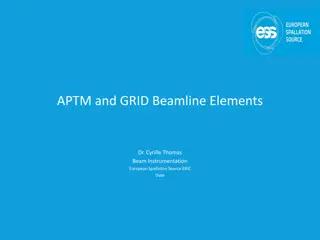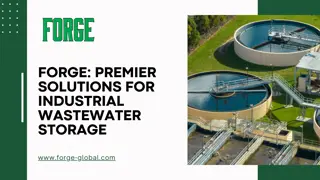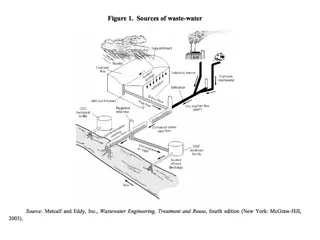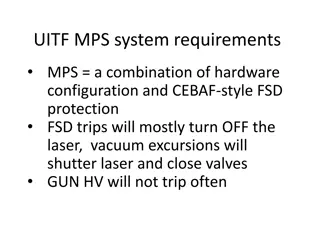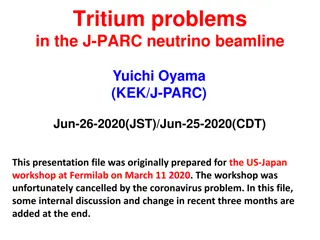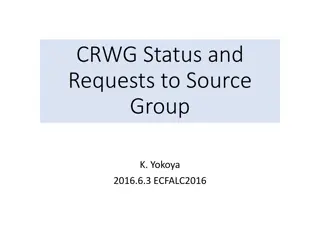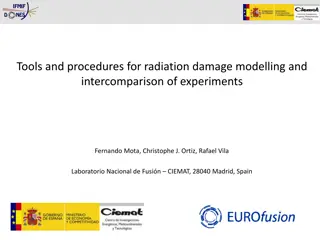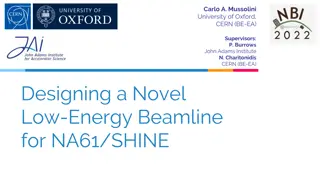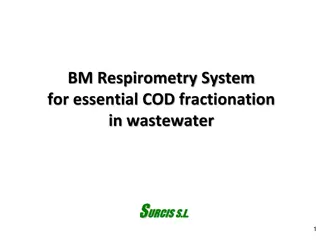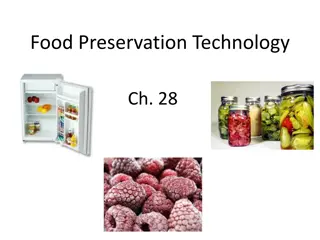Design of a 10 MeV Beamline for E-beam Irradiation at UITF Wastewater Facility
This paper discusses the design of a 10 MeV beamline at the Upgraded Injector Test Facility for electron beam irradiation, focusing on wastewater treatment for environmental restoration. The use of electron beam irradiation is highlighted as an effective method to remove pollutants like 1,4 dioxane and PFAS in wastewater. Details about the electron beam initial parameters, SRF acceleration, and magnet positions are provided for wastewater treatment applications. The study aims to address wastewater treatment challenges, emphasizing the versatility, efficiency, and safety of electron beam irradiation for large-scale treatment.
Download Presentation

Please find below an Image/Link to download the presentation.
The content on the website is provided AS IS for your information and personal use only. It may not be sold, licensed, or shared on other websites without obtaining consent from the author.If you encounter any issues during the download, it is possible that the publisher has removed the file from their server.
You are allowed to download the files provided on this website for personal or commercial use, subject to the condition that they are used lawfully. All files are the property of their respective owners.
The content on the website is provided AS IS for your information and personal use only. It may not be sold, licensed, or shared on other websites without obtaining consent from the author.
E N D
Presentation Transcript
12th International Particle Accelerator Conference - IPAC21, May 24 28, 2021. Design of a 10 MeV Beamline at the Upgraded Injector Test Facility for e-beam Irradiation Xi Li1(xli009@odu.edu), Fay Hannon2, Helmut Baumgart1,3, Gianluigi Ciovati2, Shaoheng Wang2. 1 Department of Electrical and Computer Engineering, Old Dominion University, Norfolk, VA 23529. 2 Thomas Jefferson National Accelerator Facility, Newport News, VA 23606 3 The Applied Research Center at Thomas Jefferson National Accelerator Facility, Newport News, VA 23606
EB irradiation for wastewater treatment Restoration of the Chesapeake Bay Land subsidence program Pollutants in wastewater Micro-organisms, bacterial, viral, phatogen. Treat the wastewater to the drinking water level and send it to the water aquifer to slow down and stop the sand sinking. Metal, toxic chemicals. Manufactured organic compounds.. 1,4 dioxane by HRSD (Hampton roads sanitation district). PFAS (Perfluoroalkyl and Polyfluoroalkyl Substances). o Miscible in water and difficult to be removed by the conventional treatment methods. EB (electron beam) irradiation is proven to be the most suitable method to remove them. Versatile, non-selective for kinds of pollutants Effective and efficient, large-scale treatment with less time. Risk-free, absence of extra chemicals or radioactive risks. 2 https://www.chesapeakequarterly.net/sealevel/main2/
UITF wastewater beamline at Jlab Facility: UITF at Jefferson lab. Energy: 8 MeV (Max: 10 MeV) Current: 100 nA (CW) Depth: 4 cm, volume: 75 mL. -> radius: ~2.43 cm Radius ~ 25 mm Transverse: Gaussian distribution, ??,??= 8.3 ??. x Electron Gun UITF (Upgraded injector test facility) in Jefferson lab. keV beamline. y Joe Grames, UITF optics overview, March 2016. Jefferson lab report. 3
Electron beam initial parameters Transverse spatial distribution. GPT simulation: 5000 macro particles. Parameter name Photocathode GaAs MTE 0.04 eV (@780 nm) Kinetic energy 3/2 * MTE Uniform distribution Bunch charge -1.33e-16 C 100 nA, CW mode. 0.425 mm (??) Beam size 3 cutoff, Gaussian. ~14.86 ps (??) Bunch length 4 cutoff, Gaussian. The electrons are assumed to be emitted uniformly from the photocathode. 4
SRF acceleration 2-cell cavity: 0.333 MeV energy gain, 169 degree phase shift. 7-cell cavity: ~7.5 MeV energy gain, 234 degree phase shift. The electron beam is accelerated to 8 MeV after the 2 cavities with the crest energy phases. The energy spread ?? is around 75 keV when the acceleration is not at the crest energy. 5
Defocusing solenoid Quads and solenoid magnets The optimum position of the solenoid is between 20 to 20.5 m, which is simulated by a fixed peak magnetic strength on axis. The quadrupoles are adjusted to let the beam radius of ? ~ 1.1 - 1.2 mm at the entrance of the solenoid. 6
Beam envelope Space charge effect with higher beam current. Parameters at the end of the beamline Electron energy 8 MeV < 75 keV (??) Energy spread Transverse maximum radius ~25 mm 8 - 9 mm (??) Beam size With space charge effect considered, the beam size at the end of the beamline is increasing with the beam current or bunch charge increasing, while it does not affect the beam envelop under 100 nA current. 7
Conclusions and outlook With the ability to remediate kinds of organic compounds, bacteria, virials and other pollutants in the wastewater, EB irradiation is versatile and prospective for the wastewater treatment. Based on the UITF at Jefferson lab, the EB wastewater treatment beamline is designed and achieved successfully with 8 MeV electron energy and 0.8 cm to 0.9 cm statistic transverse radius. The principle for a big beam size is utilizing a high magnetic strength solenoid to to over focus the electron beam and blow it up. Despite that there is no necessity to worry about the space charge effect under the 100 nA beam current, knowledge about the influences from it will help understand the beamline operation. For further study, the beamline will be installed, commissioned and run for the wastewater sample irradiation. 8
12th International Particle Accelerator Conference - IPAC21, May 24 28, 2021. Thank you! Design of a 10 MeV Beamline at the Upgraded Injector Test Facility for e-beam Irradiation Xi Li (xli009@odu.edu), Fay Hannon, Helmut Baumgart, Gianluigi Ciovati, Shaoheng Wang.
